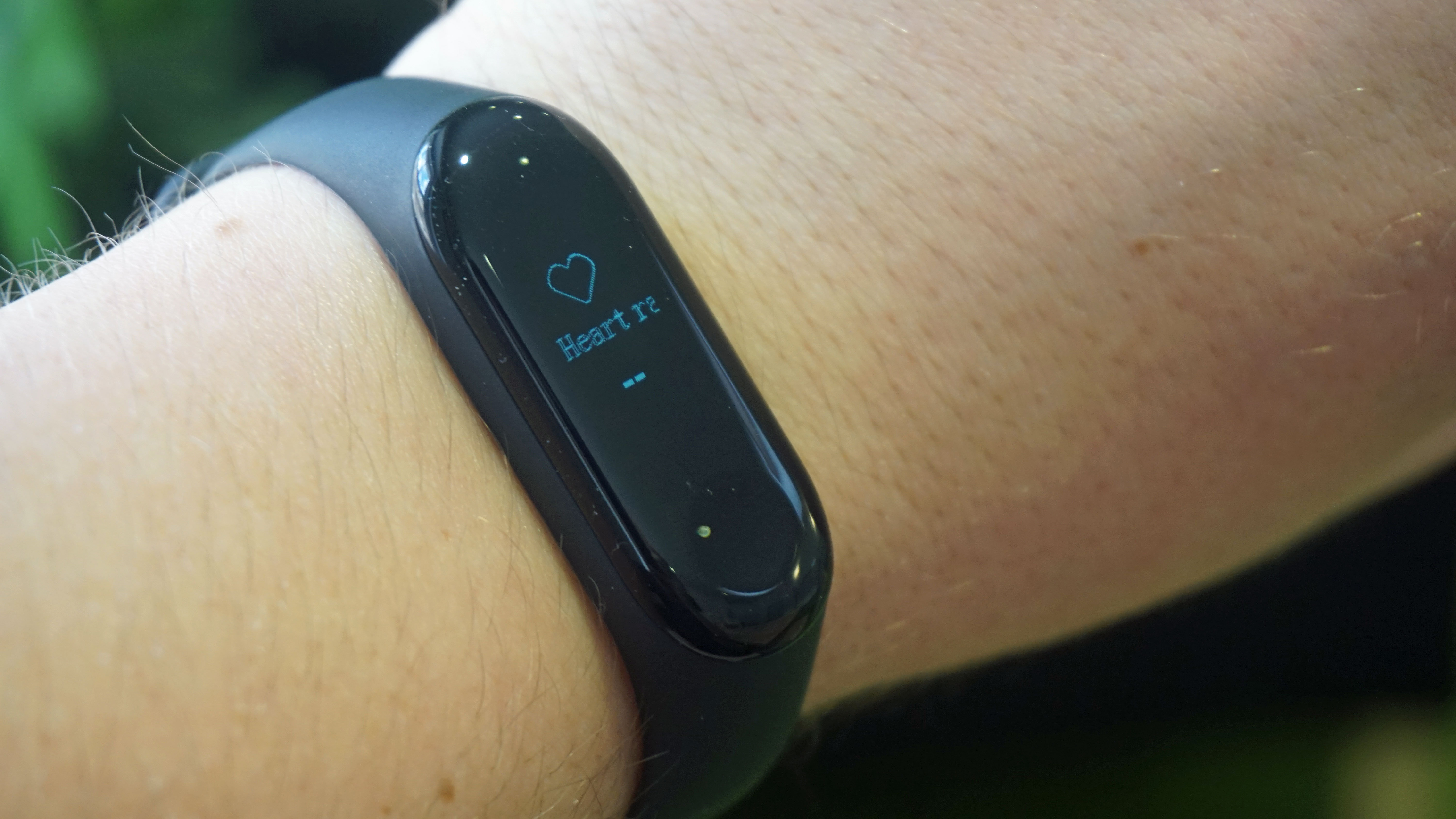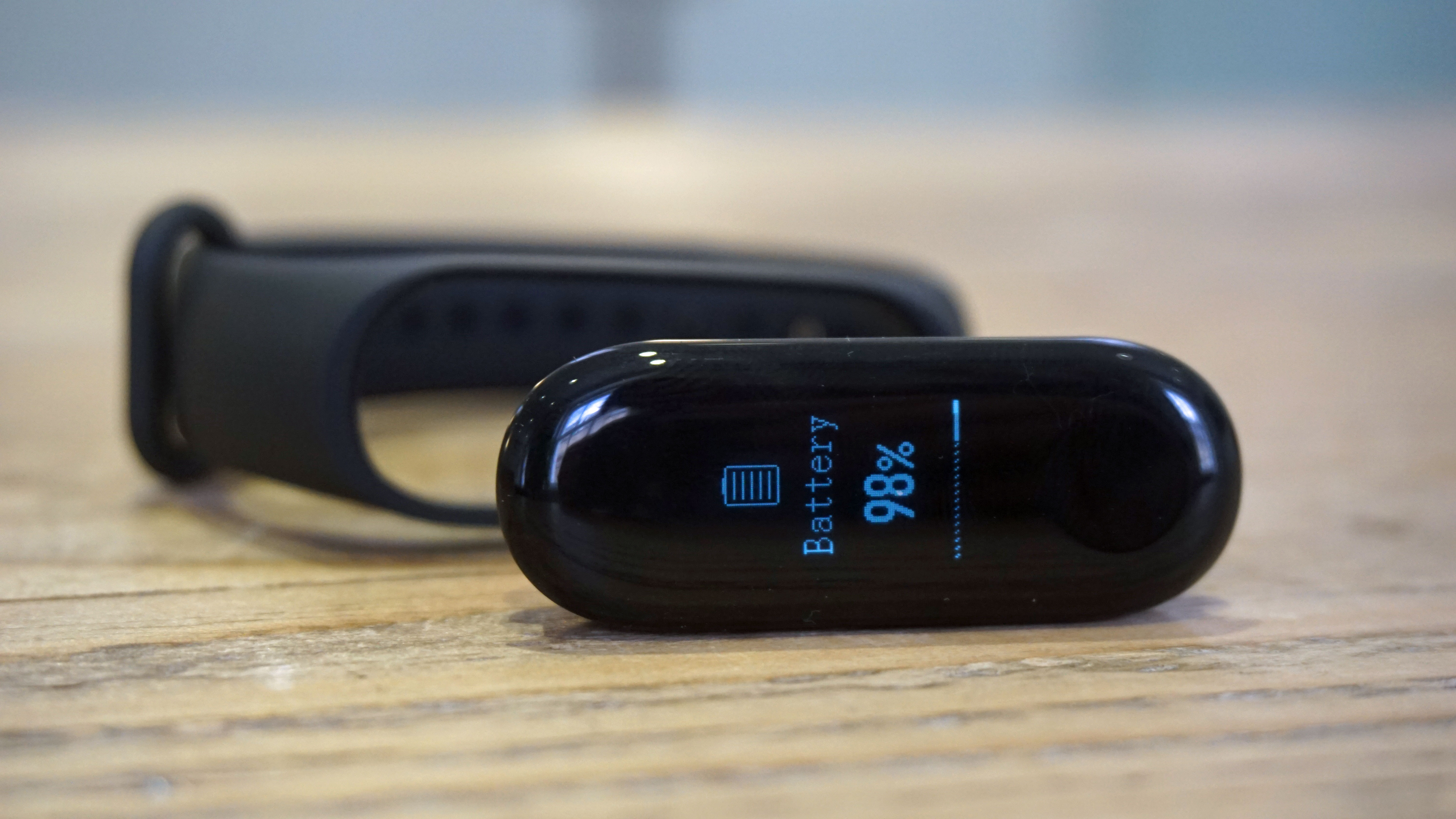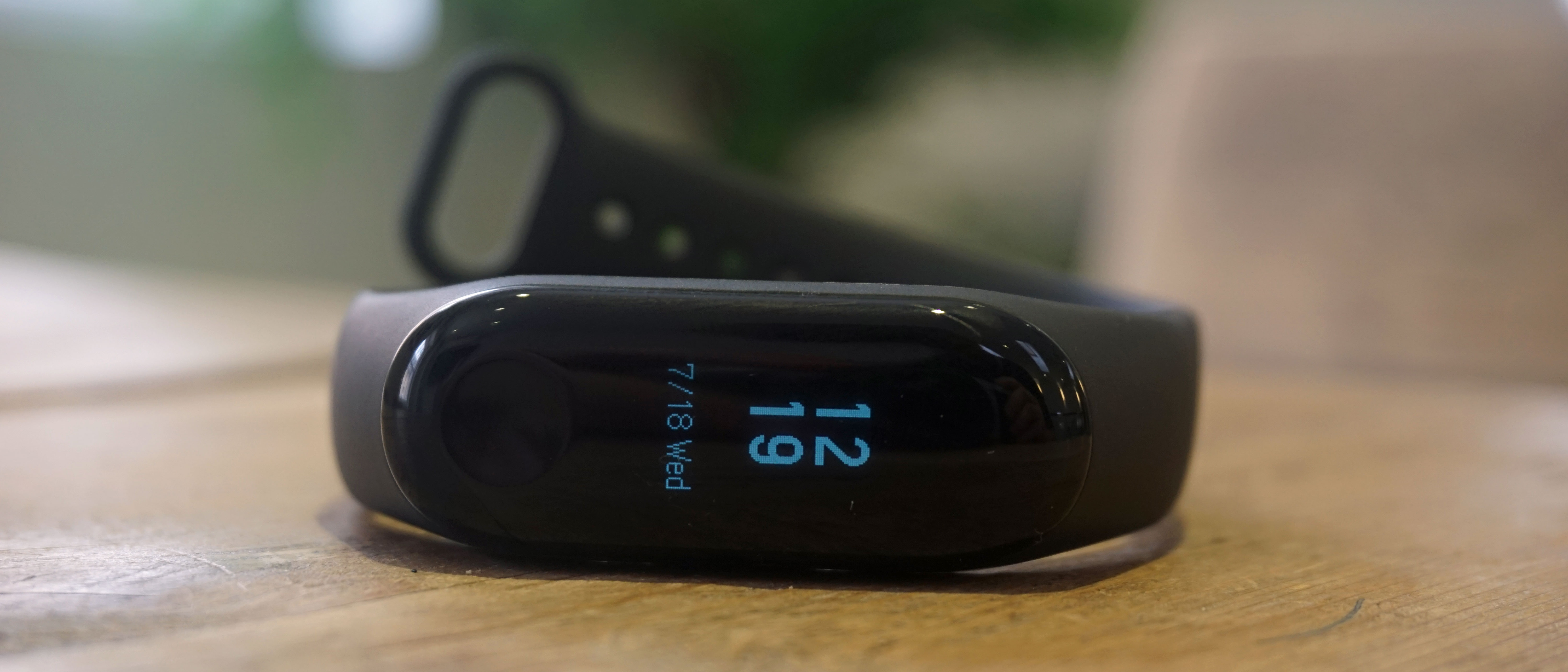Why you can trust TechRadar
Fitness
- Normal step-tracking tech built in
- Heart rate sensor on the rear, which we found temperamental
- No GPS tracking
Step tracking on the Xiaomi Mi Band 3 seemed to be accurate throughout our testing, especially when compared to the results you get from other trackers.
You're never going to get a perfectly accurate result from a wrist-based tracker, but we found it to be in the ballpark for recording our daily step count.
On the rear of the tracker is a heart rate sensor that sits directly on your skin. This isn't always-on, so it won't be constantly recording your heart rate; instead you need to activate it to get a score through to your wrist and have it recorded in the Mi Fit app (the one you'll use on your phone).
We found the heart rate tracker generally worked well when we were sitting still, but we got oddly varying results when out and about. You need to stand still, and perhaps even sit down, to get a totally accurate reading from the tracker.
Needless to say, that's not particularly useful, as you'll often want to record your heart rate when out exercising. Mid-way through a 40-minute run, we tried to record our heart rate while moving and got between 64 or 72 beats per minute, which wasn't anywhere near right.

You'll find the tracker will record your distance when you're running too, but don't expect this to be super-accurate as there's no GPS on this device. For casual runners this won't be a huge deal, as you can get okay results from your phone's GPS, but if you want something a bit more specialist you may want to look elsewhere.
The tracker is also designed to track cycling and swimming, but we haven't tested it for either of those activities yet.
One frustration we had with the Mi Band 3 is that you can't start activity tracking from the tracker itself. Instead you'll have to start an activity session from within the app, and then keep it going on the tracker as you exercise.
It would be be more useful to be able to start sessions within the tracker, which is something you can do on a lot of other devices that cost only a little more.
Specs and other features
- Unclear what tech is running inside the tracker
- Sleep tracking tech is limited but useful for basics
- Extra data including weather and notifications
During our testing period we found the Xiaomi Mi Band 3 worked speedily, although we don't know exactly what tech is powering this device.
Xiaomi has yet to share the internal spec for the Mi Band 3, but everything worked well throughout our testing, with the various features firing up quickly.
The Band 3 offers sleep tracking, and thanks to the slim and light design we didn't notice we were still wearing the tracker in bed, even on some warm and uncomfortable evenings.
The sleep stats it records are more limited than on a lot of top-end trackers. It gives you stats for sleep duration, when you've woken up and when you're in deep and light sleep.
It doesn't provide details on your REM, like some top-end Fitbit products or a dedicated tracker like the Nokia Sleep. But if you just want to know how many times you woke up in the night, and get a bit of advice on how to improve your sleeping patterns, the Mi Band 3 will probably suit you.
As mentioned, there's also NFC on another Chinese version of the Xiaomi Mi Band 3, allowing you to use it for contactless payments, but there's currently no word on whether other regions will get that functionality.
Weather information is displayed by default – you'll get the high and low temperatures for the day, and the next couple of days, as well as a brief forecast
You can also have a variety of notifications beamed to your wrist, including calls, texts, alarms, reminders and app notifications from a variety of third-party services.
These are all easy to enable via the app, and while you won't be able to reply from your wrist the Band 3 will give you a quick buzz when you're getting a phone call, for example, so you can take your phone from your pocket to check it.
App and compatiblity
The Mi Band 3 has Bluetooth 4.2 technology inside, and it'll be able to work with phones running Android 4.4 and above, or iPhones running iOS 9.0 and above, once you've downloaded the Mi Fit app to your phone.
We found it easy to set up the app on the Band 3, and it's here that you'll find all of the data you record.
It breaks down the data into days, showing your sleeping pattern, step count, heart rate, weight (if you choose to enter it manually) and more. The interface is easy to use, and it's easy to find and read the stats you need to see.
You can also start your tracking seesions from within the app, and the settings allow you to change exactly how the band works – you can select which apps can send you notifications, whether you want the tracker to vibrate for phone calls and more.
The Mi Fit app does exactly what you need it to, but there's no detailed breakdown of the data to keep you motivated and advise you on what you can do better in the future.
Battery life

The Xiaomi Mi Band 3 is powered by a 110mAh battery. We used the tracker for two weeks for our final review, and after that period it had 72% battery left.
That was from a full charge with quite extensive usage, so it should easily last for at least a month, and probably closer to six weeks, from a single charge.
Xiaomi claims its band will last for 20 days in standby mode, but we found it lasted longer even when in use, so you won't have to recharge this every night like some fitness trackers.
It's a good job the battery lasts as long as it does, as charging up the Xiaomi Mi Band 3 isn't the easiest thing to do. You have to pop the tracker out of its band and slot it into a proprietary charger, so this won't work with your average micro USB or USB-C cable.
Once that's done, however, it does charge quickly – we found that it went from around 50% to 100% in about half an hour. You won't have to charge the Mi Band 3 that often – but make sure you don't lose the charger, as you won't be able to use the chargers from your other devices.
Current page: What's it like to use?
Prev Page Introduction, price and design Next Page Verdict and competitionJames is the Editor-in-Chief at Android Police. Previously, he was Senior Phones Editor for TechRadar, and he has covered smartphones and the mobile space for the best part of a decade bringing you news on all the big announcements from top manufacturers making mobile phones and other portable gadgets. James is often testing out and reviewing the latest and greatest mobile phones, smartwatches, tablets, virtual reality headsets, fitness trackers and more. He once fell over.

